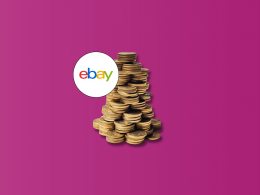Default dead or default alive. The very title of the article might remind us of Schrödinger’s cat experiment and there’s a certain degree of similarity between a cat that might be either dead or alive in the box until we open it and a business that’s default dead or default alive until we know the numbers.
“Is your business default dead or default alive?” is probably the most important question a founder might ask themselves. This is the one Paul Graham starts his essay “Default alive or default dead” with. In this article, we’ll try to single out the key takeaways of this essay and share some advice from Michael Seibel, managing director at Y Combinator and co-founder of two startups, and Dalton Caldwell, a technologist and digital music entrepreneur, from their discussion “Save your startup during the economic downturn”.
This article will cover the following:
1. What is default dead or default alive?
2. Why is default alive or default dead so difficult to realize for founders?
5. Default dead situation: problems and tough decisions
1. What is default dead or default alive?
As it was mentioned before, default dead or default alive is the concept described first by Paul Graham, a co-founder of a technology startup accelerator launched in March 2005 under the name Y Combinator. This startup helped launch more than 3,000 companies, including such well-known ones as Airbnb, Coinbase, Cruise, DoorDash, Dropbox, Instacart, Quora, PagerDuty, Reddit, Stripe and Twitch.
Paul Graham argues that every startup working for about 8-9 months should think over this question: “Assuming their expenses remain constant and their revenue growth is what it has been over the last several months, do they make it to profitability on the money they have left?” This question is essentially the same as “Is the company default dead or default alive?”, only a bit less dramatic. At the same time, Dalton Caldwell comments that being default alive is different from being profitable.
Default alive means that the business might be burning money now, but their growth rate is high enough on the revenue, so such business will become profitable before their bank account goes to zero. On the contrary, if a business burns too much and can’t become profitable before spending all the money it has, such a business is default dead.
Acknowledging the fact that your company is either default dead or default alive is a really sobering thought, which makes you evaluate the prospects of your business honestly.

2. Why is default alive or default dead so difficult to realize for founders?
According to Paul Graham, half of the startup founders don’t know whether they are default dead or default alive, because they aren’t used to asking this question. It’s compared to asking a 3-year-old about their future plans to support themselves. But at some point it’s a very important question to answer. There’s a calculator that helps with answering the default dead/default alive question if you decide to check right now.
Asking yourself whether your startup is default dead or alive might feel like you aren’t quite confident and maybe scared to acknowledge that it might not make it. That’s why many founders tend to avoid this question. The answer usually makes the future conversation about the business go two different directions. In case of being default alive, you most likely will focus on ambitions of the startup, while if your company is default dead, you’ll definitely talk about saving the business.
One more reason for ignoring the default dead/default alive question is that founders have a certain misconception about fundraising. They tend to believe that raising more money will be easier, which is far from the truth.
On the contrary, raising the next round is going to be more difficult or just different, so relying on investors to save your business shouldn’t be the only plan. Michael Seibel and Dalton Caldwell agree with that thought of Paul Graham’s saying that only having a great product might make raising money easier, otherwise it’s more difficult as the situation is changing fast.
3. Fundraising game
Default alive and default dead companies have different positions in fundraising, which is all about the leverage. The one who has more leverage gets better terms.
According to Paul Graham, investors and founders might have the opposite incentives when it comes to startups. Investors are after fast growth or fast death, the so-called “kill or cure”, while the founders want their startups to survive, especially in times of recession. So, returning to the leverage in the fundraising situation, a default alive company has more leverage because it doesn’t depend on investors to survive, the founders feel more confident, give better pitches, which makes investors compete to give them money. Default alive means that you’re in control of your business and you might allow yourself to fail at some fundraising.
Default dead startups depend on investors’ money and may agree to worse terms, like burning more money to show some growth. Default dead companies might not be attractive for investors anymore.
4. The Fatal Pinch
It’s crucial to understand whether you’re default dead or default alive before it’s too late.
The fatal pinch is the situation when a default dead company shows no or slow growth and there’s no time to fix it. In this case a company has about 6 months of runway. In such situations founders still rely on future investments. The worst thing, according to Paul Graham, is that founders overestimate their chances of raising more money, and aren’t working towards reaching profitability, which further decreases their chances of raising money.
It’s best to avoid being in the fatal pinch and treat the money you raised as if it’s the last you’ll ever get. The less you need the investment, the easier it is to get.
If you already are in the fatal pinch, there are three options left:
1) shutting down the company;
2) increasing how much you make;
3) decreasing how much you spend.
At this point it’s logical to ask rather how to avoid being default dead or what to do when you’re default dead, because the fatal pinch isn’t called fatal for nothing.

5. Default dead situation: problems and tough decisions
Headcount
The most typical problem for startups is over-hiring. Paul Graham says that founders wrongly believe that hiring more people will allow their startup to grow faster. It’s the attraction of a product that counts, not how many people are working on it. Michael Seibel and Dalton Caldwell also state that it’s important not to over-hire at the beginning as more people don’t make the product more appealing or guarantee rapid growth. If a company is default dead and burns money, the tough decision in this case is to fire people. Thinking in the default dead mode might help you not to hire more people but focus on other ways of reaching growth, for example, redesigning the product.
Ad spend
According to Michael Seibel and Dalton Caldwell, spending too much on advertising can be a hit to your startup. The misconception that a growing company must spend more and more on advertising fuels this problem. The result of this is that the payback period on every acquired customer is either very long or long and growing, which makes ad dollars spent ineffective. The whole situation of burning money in the default dead situation is compared to steering a plane into the mountain.
Raising prices
Raising prices is one more tough decision that companies come to when they want to break even. Unfortunately, it might not be able to save the day. Raising prices means selling to fewer people, as customers today are very sensitive to growing prices and are looking for deals and discounts.
Key takeaways:
Understanding whether your company is default dead or default alive is crucial for any startup as it helps to work on the development strategy and fix some things before it’s too late. The most important points to remember here are:
- Before you thrive, you have to survive. The growth of a startup shouldn’t be super-fast. Investors are interested in the companies with steep growth too.
- You’re in control of your business. Investors aren’t going to twist your arm to burn more. They might ask, but it’s your decision after all.
- Learn to take the “L” (loss). It’ll help you grow a responsible and sustainable business.
- Knowing your numbers is a must. It’s the responsibility of founders to track the numbers and act accordingly.







.png)
